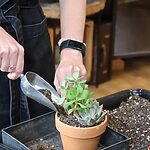What Are Zebra Mussels?
Zebra mussels (Dreissena polymorpha) are small but invasive aquatic pests originating from Eastern Europe and Western Asia, particularly around the Black Sea and Caspian Sea regions. These mussels, recognized by their distinct striped shells, are a significant concern worldwide. Hardy and adaptable, zebra mussels easily attach to various surfaces and thrive in freshwater environments, where they rapidly spread and disrupt ecosystems

Why Are Zebra Mussels Harmful to Non-native Ecosystems?
In their native range, zebra mussels play a balanced role in the ecosystem. However, outside their natural habitat, they become highly invasive. When zebra mussels invade non-native environments, they cause serious ecological damage.
As filter feeders, zebra mussels consume vast amounts of plankton and other microscopic organisms that serve as food for native aquatic plants and animals. This rapid depletion of resources disrupts the local food chain, impacting everything from fish populations to aquatic vegetation.
Zebra mussels also reproduce prolifically, with a single female capable of producing over a million eggs each year. This rapid population increase allows them to form dense colonies that clog water intake systems, foul boats and docks, and damage local water infrastructure. According to the Great Britain Non-native Species Secretariat (GBNNSS), zebra mussels can become costly pests, requiring ongoing management for water utilities and industrial systems that rely on clean water flow.
How to Safely Handle and Dispose of Zebra Mussels Found on Marimo Moss Balls
If zebra mussels are found on a Marimo moss ball in a home jar or aquarium without external water contact, you can take steps to eliminate the zebra mussels while preserving the moss ball itself. Follow these safe disposal practices recommended by GBNNSS:
Separate and Freeze: Place any zebra mussels (if detachable) or the entire Marimo moss ball in a sealed plastic bag and freeze for at least 48 hours. Freezing is an effective method to kill the zebra mussels while keeping the Marimo moss safe for continued use.
Drying the Zebra Mussels: After freezing, if you’ve separated the zebra mussels from the Marimo, allow the mussels to air-dry. The Great Britain Non-native Species Secretariat (GBNNSS) recommends drying for at least 30 days but extending this to 60 days ensures safety, as zebra mussels can survive in moist conditions for extended periods. The Marimo moss ball, as a standalone aquatic plant, can safely return to its container after the zebra mussels have been removed.
Safe Disposal: Once the zebra mussels are frozen and dried, dispose of them in household waste to prevent contamination. Avoid disposing of zebra mussels in water systems to prevent potential spread.
Disposal of Water: Any water from a container with zebra mussels should not be poured down drains or into natural water bodies. Instead, pour it onto dry land far from lakes or streams.
Preventing the Spread of Zebra Mussels and Aquatic Pests
The GBNNSS recommends regular inspection and cleaning of water gear, aquatic plants, and aquarium items, especially Marimo moss balls. Avoid transferring aquatic plants and animals between water bodies, as even minor exposure can lead to new infestations of zebra mussels and other invasive species.
Conclusion
Zebra mussels are a significant threat to water ecosystems in the UK, particularly when unintentionally introduced through water plants like Marimo moss balls. By understanding the risks and following proper disposal protocols, aquarium owners can help protect local biodiversity. Always refer to credible sources, for current guidelines on handling invasive species.
Sources:
Great Britain Non-native Species Secretariat (GBNNSS). “Zebra Mussels: Identification, Control, and Prevention.” Available at nonnativespecies.org
UK Environmental Agency. “Managing and Preventing Aquatic Invasive Species.” Environment Agency publications, 2023
Wildlife and Countryside Act 1981, Schedule 9. “Regulation of Non-native Species in the UK.” Accessed from gov.uk
National Invasive Species Information Center (NISIC), USDA. “Zebra Mussels and Aquatic Invasive Species Management.” Accessed from invasivespeciesinfo.gov
CABI Invasive Species Compendium. “Dreissena polymorpha (Zebra Mussel) Profile.” Centre for Agriculture and Bioscience International, 2022. Accessed from cabi.org














